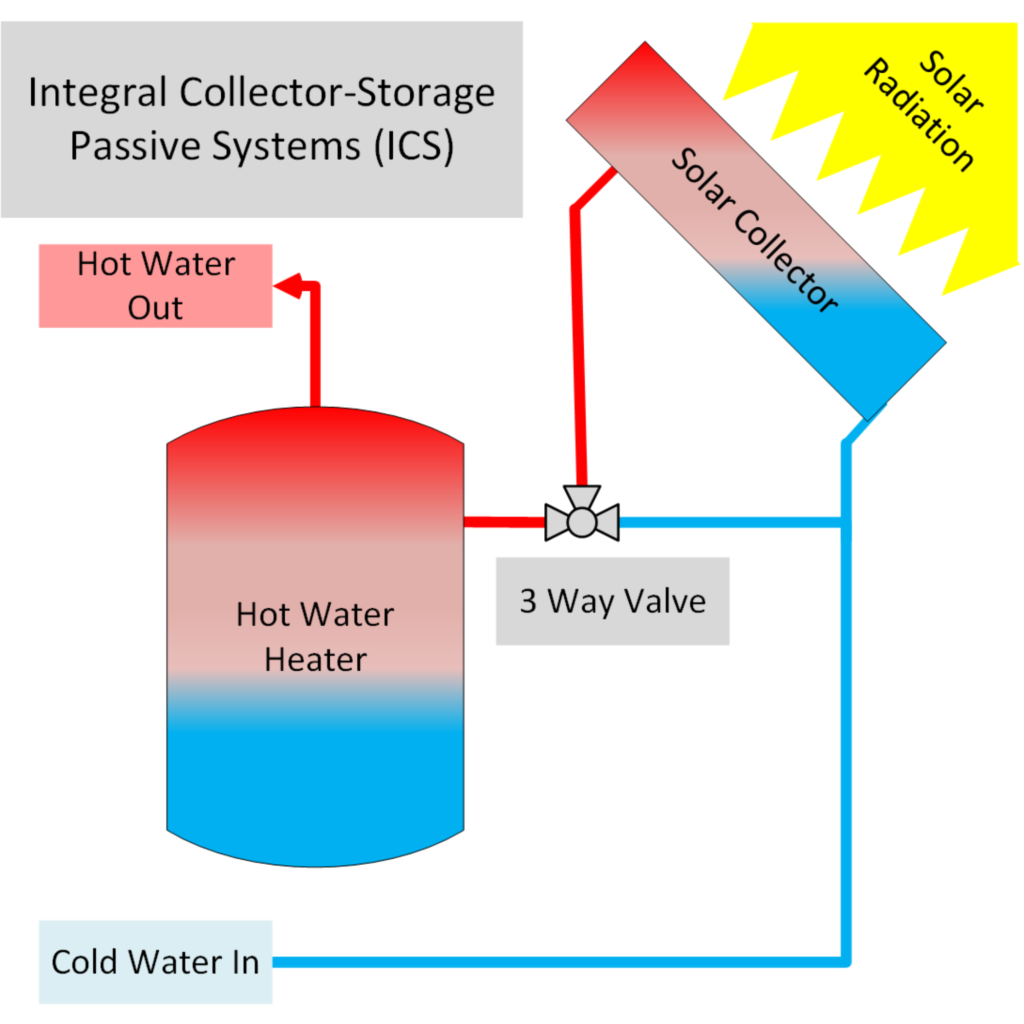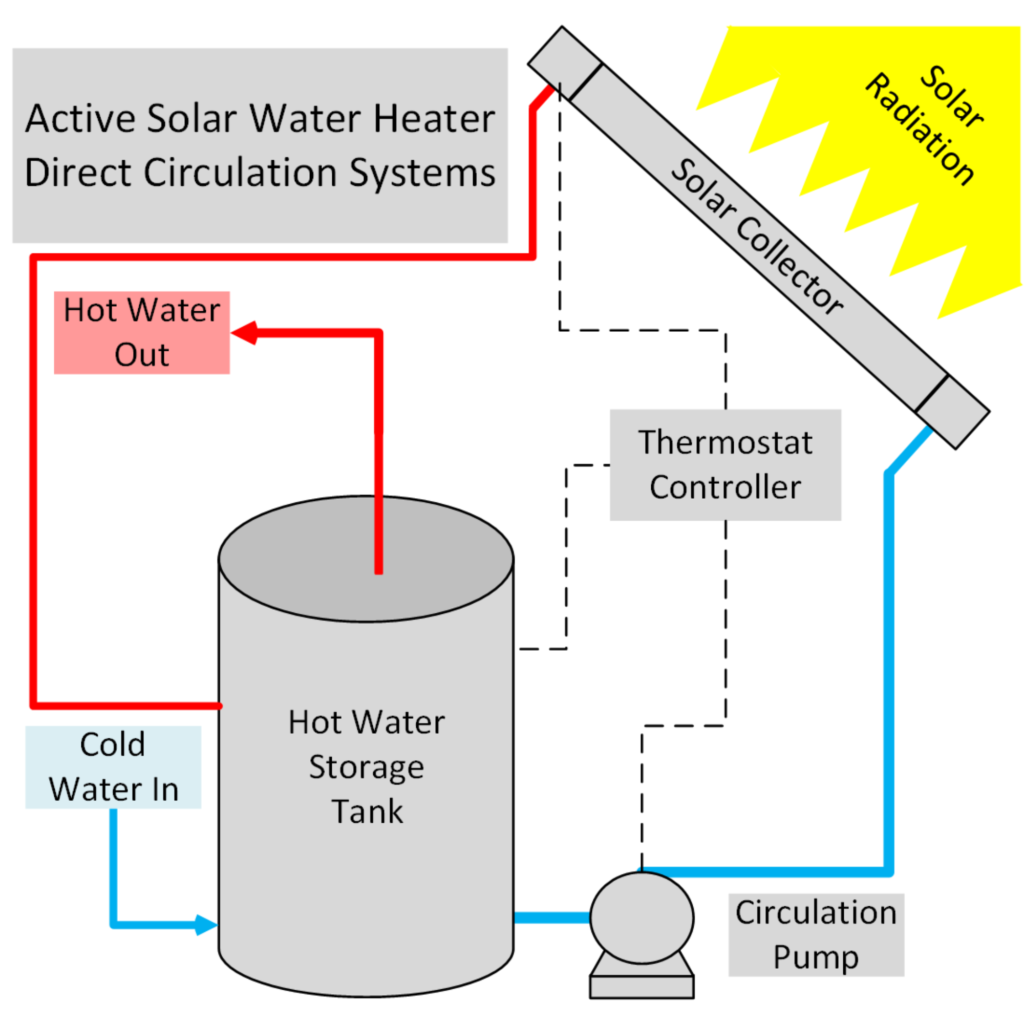Solar water heaters utilize sunlight to heat water for residential, commercial, and industrial purposes. They consist of solar thermal collectors that absorb solar radiation and transfer the thermal energy to a fluid, which then circulates to heat water stored in a tank. These systems provide an energy-efficient and cost-effective way to meet hot water demands while reducing reliance on conventional heating methods.
Solar water heaters offer an environmentally friendly solution for heating water, utilizing renewable energy from the sun to reduce energy consumption and lower utility costs. With various types available, including passive and active systems, they can be tailored to specific requirements and geographical locations. By harnessing solar energy for water heating, these systems contribute to a sustainable and eco-conscious approach to meet every day hot water needs.
Solar water heaters provide a reliable and efficient method for heating water using solar thermal energy. They offer a practical and eco-friendly alternative to traditional water heating systems, helping to minimize the use of non-renewable resources and decrease carbon footprints. With proper installation and maintenance, these systems can significantly contribute to energy savings and promote sustainable living practices.
Passive Solar Water Heating Systems
Passive solar water heating systems are typically less expensive than active systems, but they’re usually not as efficient. However, passive systems can be more reliable and may last longer. There are two basic types of passive systems:

Integral Collector-Storage Passive Systems (ICS)
Integral collector-storage passive systems, also known as batch or breadbox systems, consist of a water storage tank or container that is integrated with solar collectors. These systems operate without the need for pumps or controls and rely on natural convection to circulate water through the collector and into the storage tank. They are relatively simple in design and are typically used in moderate climates with minimal risk of freezing temperatures.
- Simplicity: Operate without the need for pumps or controls, utilizing natural convection for water circulation.
- Affordability: Relatively cost-effective to install and maintain, making them a practical choice for budget-conscious consumers.
- Durability: Built with sturdy materials and integrated components, ensuring long-term reliability and minimal maintenance requirements.
- Climate Suitability: Ideal for moderate climates with minimal risk of freezing temperatures, offering efficient water heating in suitable environmental conditions.
- Energy Efficiency: Harness passive solar heating principles to provide an energy-efficient solution for heating water, contributing to reduced energy consumption and lower utility costs.

Thermosyphon Systems
Thermosyphon systems for solar water heating utilize the natural convection process to circulate water between solar collectors and storage tanks. These systems feature a collector positioned below the storage tank, allowing heated water to rise naturally into the tank through thermally induced convection. They operate without the need for additional pumps or controls and are commonly used in residential and commercial settings for efficient water heating.
- Natural Convection: Utilize thermally induced convection to circulate water between the solar collectors and the storage tank, eliminating the need for additional pumps.
- Space Efficiency: Suitable for both residential and commercial applications, offering a space-efficient and compact design for various building types.
- Low Maintenance: Require minimal upkeep due to the absence of complex components, reducing the need for frequent repairs or system checks.
- Reliability: Operate consistently and reliably, providing a steady supply of heated water for domestic or commercial use throughout the year.
- Cost-Effectiveness: Provide a cost-effective solution for solar water heating, contributing to energy savings and reduced utility expenses over the system’s lifespan.
Active Solar Water Heating Systems
Active solar water heating systems are generally more expensive than passive systems, but they offer higher efficiency and greater control over the heating process. These systems are equipped with pumps and controllers that actively circulate water or heat-transfer fluids between the solar collectors and the storage tanks. There are two primary types of active systems, known as direct circulation and indirect circulation systems, each designed to optimize heat transfer and provide reliable hot water supply in various climate conditions.

Direct Circulation Systems
Direct circulation systems for solar water heating involve the direct movement of water through the solar collectors, where it is heated by solar energy before being circulated back into the storage tank. These systems are typically suitable for regions with mild climates and are designed to efficiently heat water without the need for additional heat exchangers.
- Efficient Heat Transfer: Directly circulate water through solar collectors to absorb thermal energy and transfer it to the storage tank, increasing overall system efficiency.
- Suitable for Mild Climates: Ideal for regions with mild climates where freezing temperatures are not a significant concern, ensuring consistent and effective water heating performance.
- Simplicity in Design: Feature a relatively straightforward design with fewer components, allowing for easier installation and maintenance compared to some indirect systems.
- Quick Heat Transfer: Facilitate rapid heat transfer from the collectors to the water, providing a swift and efficient heating process for immediate hot water needs.
- Energy Savings: Contribute to energy savings and reduced utility costs by utilizing solar energy as the primary heat source for water heating, promoting sustainability and eco-friendliness.
.

Indirect Circulation Systems
Indirect circulation systems for solar water heating utilize a heat-transfer fluid, such as antifreeze, to transfer heat from the solar collectors to the water within the storage tank. These systems are suitable for various climate conditions, including areas prone to freezing temperatures, and they employ heat exchangers to facilitate the heat transfer process, ensuring consistent and reliable hot water supply.
- Freeze Protection: Employ a heat-transfer fluid, such as antifreeze, to prevent freezing in colder climates, ensuring the system’s functionality even during low-temperature periods.
- Versatility: Provide flexibility in various climate conditions, including areas prone to freezing temperatures, making them suitable for a wider range of geographical locations.
- Compatibility with Heat Exchangers: Enable compatibility with heat exchangers to transfer heat from the solar collectors to the water, ensuring efficient heat transfer and consistent hot water supply.
- Reduced Corrosion: Minimize the risk of corrosion in the water system by using a heat-transfer fluid that does not directly interact with the potable water supply, ensuring water quality and system longevity.
- System Longevity: Offer a reliable and durable solution for solar water heating, contributing to a prolonged system lifespan and consistent performance, with proper maintenance and upkeep.
